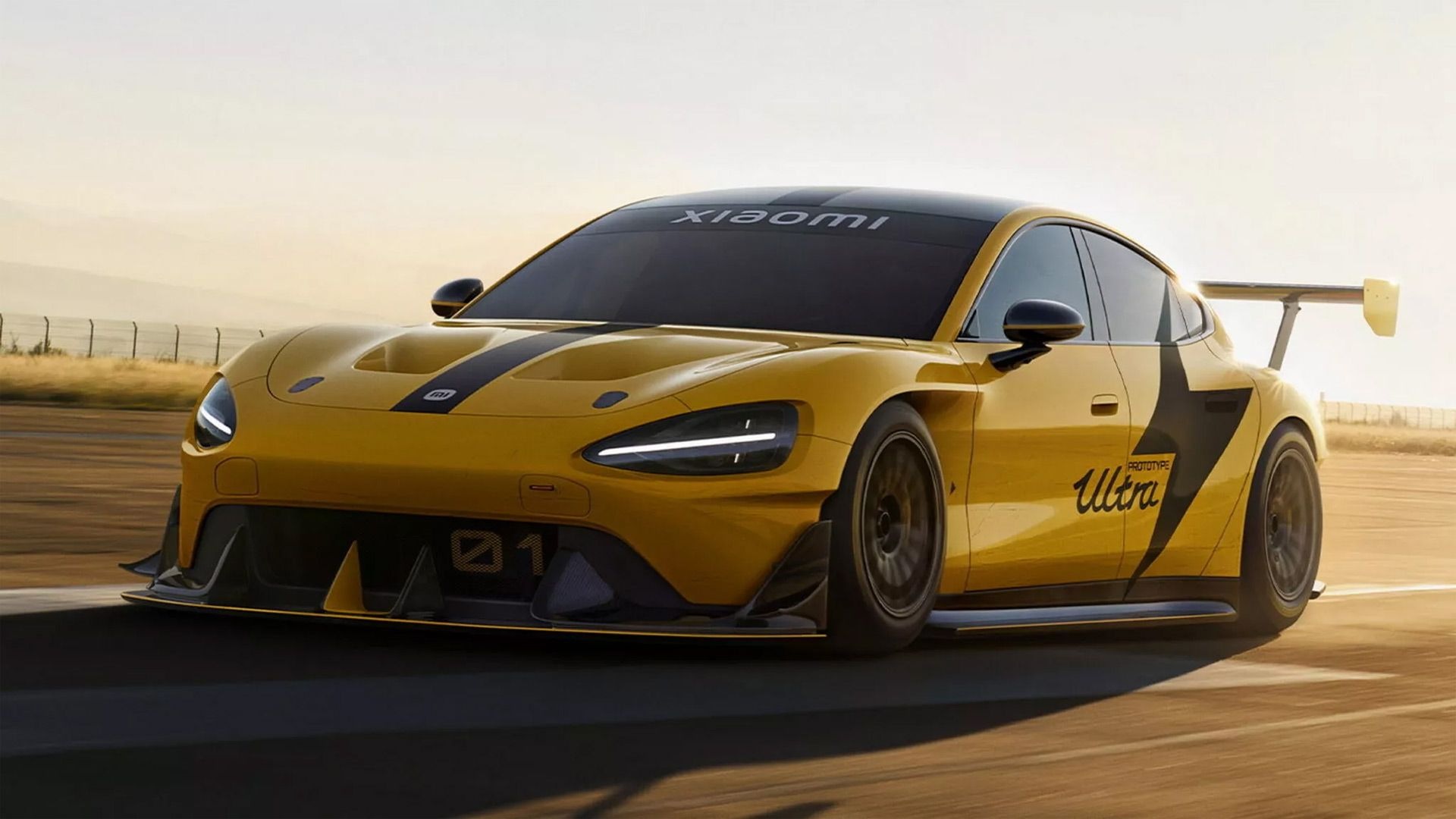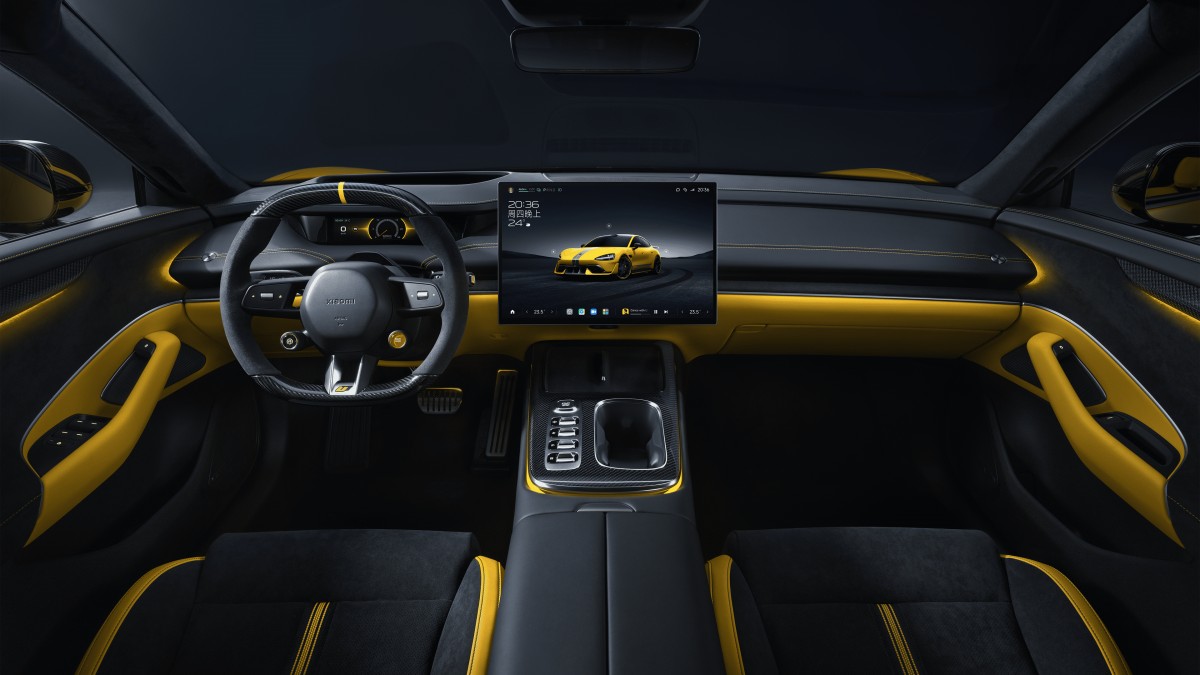EIV – Electric Intelligent Vehicles
Electric Intelligent Vehicles (EIV) refers to electric vehicles (EVs) that are enhanced with advanced intelligence, artificial intelligence (AI), and smart technologies. It emphasizes both the electric nature of the vehicle and its integration with intelligent systems, making it a great choice for discussions around modern, tech-driven transportation.

Key Features of Electric Intelligent Vehicles (EIV):
- Autonomous Driving : Self-driving capabilities powered by AI and machine learning.
- Smart Energy Management : AI optimizes battery usage, charging schedules, and energy efficiency.
- Connectivity : Integration with IoT (Internet of Things) for real-time data exchange with other vehicles, infrastructure, and smart grids.
- Personalized User Experience : AI tailors the driving experience to individual preferences, from climate control to entertainment.
- Predictive Maintenance : AI monitors vehicle
The Huawei M9 is a great example of an Electric Intelligent Vehicle (EIV) ! Huawei, a global leader in technology and telecommunications, has been making significant strides in the automotive industry by integrating its expertise in AI, connectivity, and smart technologies into electric vehicles. The Huawei M9, developed in collaboration with partners like AITO (a brand under Seres Group), showcases how advanced intelligence can be seamlessly integrated into electric vehicles to create a truly smart and connected driving experience.

Why the Huawei M9 is a Perfect Example of EIV:
1. AI-Powered Driving Assistance
- The Huawei M9 comes equipped with Huawei’s ADS (Advanced Driving System) , which offers advanced driver-assistance features such as adaptive cruise control, lane-keeping assistance, and even semi-autonomous driving capabilities. This system uses AI and machine learning to improve safety and convenience on the road.
- It also includes high-definition mapping and real-time traffic data processing , allowing for more precise navigation and route optimization.
2. HarmonyOS Integration
- The vehicle runs on HarmonyOS , Huawei’s proprietary operating system, which is designed to provide a seamless and intuitive user experience. HarmonyOS enables deep integration between the car and other Huawei devices, such as smartphones, tablets, and smart home systems.
- With HarmonyOS, drivers and passengers can enjoy features like voice-controlled assistants , multi-device connectivity , and personalized settings that adapt to individual preferences.
3. Smart Energy Management
- The Huawei M9 leverages AI to optimize energy consumption, ensuring maximum efficiency in terms of battery usage and charging. The system can analyze driving patterns, weather conditions, and traffic to recommend the most energy-efficient routes.
- Additionally, the vehicle supports smart charging solutions , allowing users to schedule charging during off-peak hours or when renewable energy sources are available, reducing costs and environmental impact.
4. Connected and Autonomous Features
- The M9 is designed to be a connected vehicle , meaning it can communicate with other vehicles (V2V) and infrastructure (V2I) to enhance safety and traffic flow. This connectivity is crucial for future advancements in autonomous driving.
- Huawei’s 5G technology plays a key role in enabling ultra-fast communication between the vehicle and external systems, paving the way for fully autonomous driving in the future.
5. Immersive In-Car Experience
- The Huawei M9 offers a premium in-car experience with features like augmented reality (AR) heads-up displays , high-resolution infotainment screens , and immersive sound systems powered by Huawei’s audio technology.
- Passengers can enjoy entertainment on demand , including streaming services, gaming, and video conferencing, all controlled through intuitive touchscreens or voice commands.
6. Over-the-Air (OTA) Updates
- Like many modern EVs, the Huawei M9 supports over-the-air updates , allowing the vehicle to receive software upgrades remotely. These updates can improve performance, add new features, and fix bugs without requiring a visit to a service center.
- This ensures that the vehicle remains up-to-date with the latest advancements in AI, connectivity, and safety features throughout its lifecycle.
7. Sustainability and Eco-Friendly Design
- As an electric vehicle, the Huawei M9 contributes to reducing carbon emissions and promoting sustainable transportation. Its intelligent systems further enhance this by optimizing energy use and promoting eco-friendly driving habits.
Although, the evolution of all EVs into EIVs is not just a possibility yet, luxury EVs are at the forefront of the transition from basic EVs to Electric Intelligent Vehicles (EIVs) . In fact, luxury automakers have been leading the charge in integrating advanced intelligence, cutting-edge technology, and premium features into their vehicles. This is because luxury buyers expect not only high performance and comfort but also the latest innovations in connectivity, autonomy, and personalization.
Luxury EVs are already evolving into EIVs, and this trend will only accelerate in the coming years. Here’s why luxury EVs are particularly well-suited to become fully intelligent vehicles:
1. Luxury Buyers Demand Cutting-Edge Technology
Luxury consumers are often early adopters of new technologies, and they expect their vehicles to offer the most advanced features available. For luxury EVs, this means incorporating:
- Advanced AI systems : For autonomous driving, predictive maintenance, and personalized experiences.
- Seamless connectivity : Integration with smart ecosystems, 5G, and IoT devices.
- Immersive entertainment : High-end audio systems, AR/VR displays, and rear-seat entertainment.
Luxury brands like Tesla , Mercedes-Benz , BMW , Audi , Lucid Motors , and NIO are already offering these features in their top-tier models, setting a benchmark for what luxury EVs should deliver.
2. Autonomous Driving and Advanced Driver Assistance Systems (ADAS)
Luxury EVs are among the first to adopt Level 3 and Level 4 autonomous driving capabilities , which allow for semi-autonomous or fully autonomous driving under certain conditions. These systems rely on AI, sensors, cameras, and real-time data processing, all of which are hallmarks of EIVs.
Examples:
- Mercedes-Benz EQS : Features advanced ADAS and over-the-air updates, making it one of the most technologically advanced luxury EVs.
- Lucid Air : Offers DreamDrive Pro, a suite of autonomous driving features powered by AI and LiDAR sensors.
- Tesla Model S Plaid : Known for its Full Self-Driving (FSD) capabilities, Tesla continues to push the boundaries of autonomous driving.
For luxury buyers, the ability to “let the car drive itself” is a key selling point, and automakers are investing heavily in this area to meet demand.
3. Personalization and Premium User Experience
Luxury EVs are designed to provide a highly personalized experience, leveraging AI to adapt to the preferences of individual drivers and passengers. This includes:
- Customizable interiors : Adjustable seating, climate control, and lighting based on user profiles.
- Voice assistants : AI-powered voice systems that learn driver habits and preferences over time.
- Augmented Reality (AR) Displays : Heads-up displays that overlay navigation, traffic, and safety information onto the windshield.
For example:
- The BMW iX uses AI to personalize the driving experience, from adjusting the seat position to recommending routes based on past behavior.
- The NIO ET7 offers a “smart cockpit” with AI-driven personalization and immersive sound systems.
These features cater to the luxury buyer’s desire for exclusivity and tailored experiences.
4. Seamless Connectivity and Over-the-Air (OTA) Updates
Luxury EVs are increasingly becoming connected platforms that integrate with other devices and services. Features like over-the-air updates ensure that the vehicle remains up-to-date with the latest software, security patches, and features throughout its lifecycle.
Examples:
- Tesla : Pioneered OTA updates, allowing owners to receive new features and performance improvements without visiting a service center.
- Polestar 3 : Offers OTA updates and integrates with Google’s ecosystem for seamless connectivity.
- Rivian R1T/R1S : Provides regular OTA updates to enhance functionality and performance.
Luxury buyers value the convenience and future-proofing that OTA updates provide, ensuring their vehicle remains cutting-edge even years after purchase.
5. Sustainability and Energy Efficiency
Luxury EVs are also at the forefront of sustainable innovation, using AI to optimize energy consumption and reduce environmental impact. Features like:
- Smart energy management : AI optimizes battery usage, charging schedules, and regenerative braking to maximize range.
- Vehicle-to-Grid (V2G) integration : Allows the vehicle to interact with smart grids, supporting renewable energy and reducing costs.
For example:
- The Lucid Air boasts one of the longest ranges of any EV, thanks to its advanced battery technology and energy management systems.
- The Mercedes-Benz EQXX concept achieves an impressive 1,000 km range through lightweight design and AI-driven efficiency.
Luxury buyers are often environmentally conscious, and automakers are leveraging intelligence to make their EVs more sustainable.
6. Immersive Entertainment and Comfort
Luxury EVs are redefining in-car entertainment and comfort, offering features that go beyond traditional vehicles:
- High-end audio systems : Brands like Burmester , Bang & Olufsen , and Krell provide concert-quality sound.
- Augmented Reality (AR) Navigation : Projects real-time directions onto the windshield for a safer and more intuitive driving experience.
- Rear-Seat Entertainment : Large screens, streaming services, and gaming capabilities for passengers.
For example:
- The Audi e-tron GT offers a premium sound system and customizable ambient lighting for a luxurious atmosphere.
- The Cadillac Lyriq features a massive 33-inch curved LED display for both driver and passenger use.
These features cater to the luxury buyer’s desire for comfort, entertainment, and exclusivity.
7. Vehicle-to-Everything (V2X) Communication
Luxury EVs are also adopting V2X communication , which allows them to interact with other vehicles, infrastructure, and smart city systems. This enhances safety, improves traffic flow, and supports autonomous driving.
Examples:
- BMW iX : Supports V2X communication for real-time traffic updates and hazard warnings.
- Volvo EX90 : Integrates V2X to improve safety and efficiency in urban environments.
Luxury buyers value the added safety and convenience that V2X provides, especially in densely populated areas.
8. Partnerships with Tech Companies
Luxury automakers are partnering with tech giants like Huawei , Google , Apple , and NVIDIA to integrate the latest AI, connectivity, and computing technologies into their vehicles. These partnerships ensure that luxury EVs remain at the cutting edge of innovation.
Examples:
- Huawei M9 : Combines Huawei’s AI, 5G, and HarmonyOS to create a fully connected and intelligent luxury EV.
- Polestar : Collaborates with Google to offer Android Automotive OS with built-in Google services.
These collaborations allow luxury automakers to leverage the expertise of tech companies, ensuring their vehicles are as intelligent as possible.